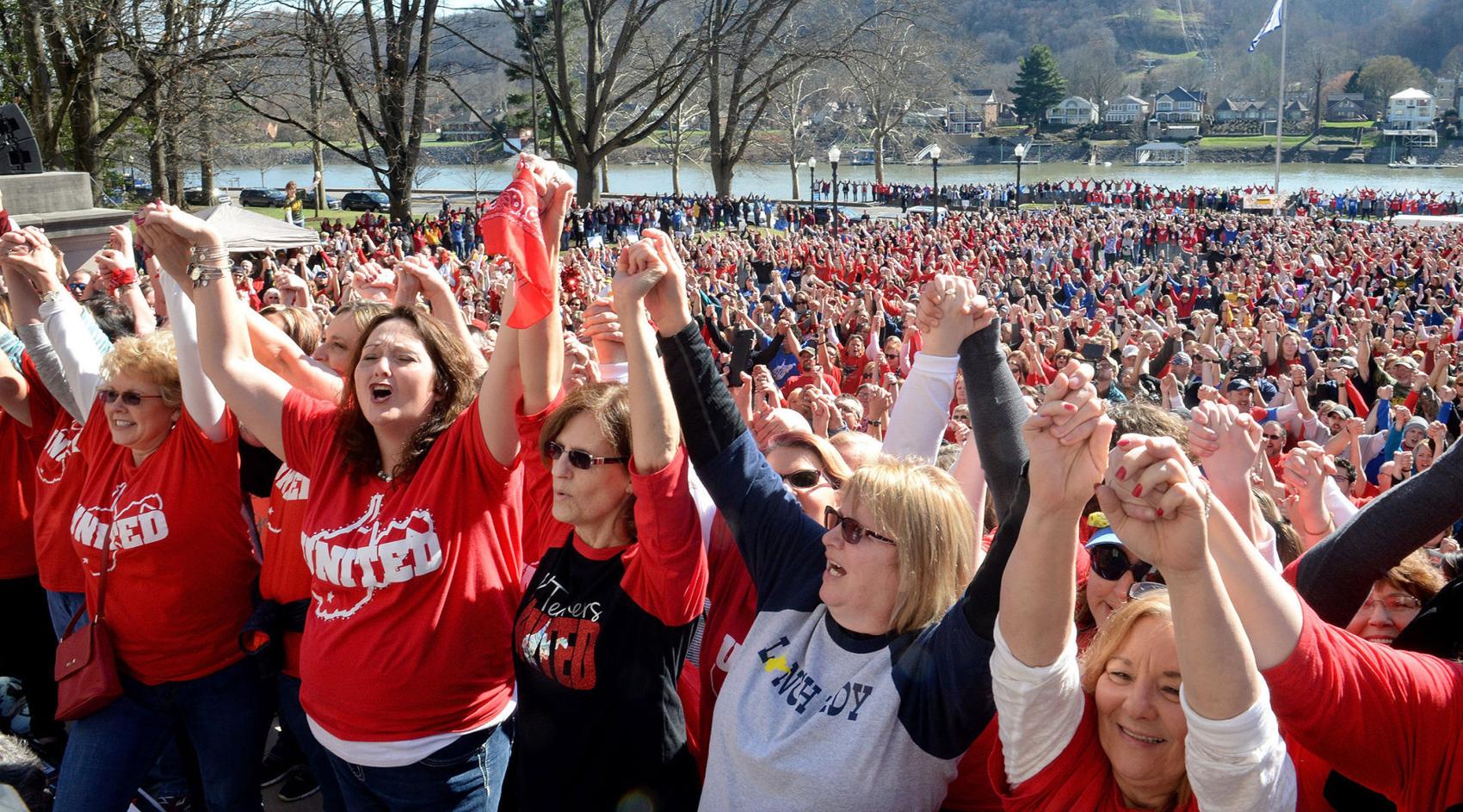Featured
Joe White (WV School Service Personnel Association); Jay O’Neal (WVEA-Kanawha County); Emily Comer (AFT-WV); Amy Neal (AFT-WV in Cabell County); Dale Lee (WVEA); Brandon Wolford (WVEA-Mingo County); Christine Campbell (AFT-WV); Bob Brown (AFT-WV); Kris Mallory (AFT-WV)
Excerpt
More than two weeks have passed since the end of West Virginia’s first statewide public school employees strike, which was also the first to include both teachers and school service personnel.
Time was needed to prove it was actually over. Proposals backed by one or more state union leaders to end the strike, first by switching to rolling walkouts of several counties at a time, then by asking workers to trust Republican Gov. Jim Justice’s support of higher pay increases and a task force, didn’t do the trick.
The strike did end, as did this year’s regular legislative session, without laws to provide enough dedicated, long-term funding to avoid cuts to Public Employees Insurance Agency health benefits. Past and proposed cuts were major — perhaps the foremost — drivers of the work stoppage.
But lawmakers also didn’t pass other bills public school workers opposed, including legislation that would have reduced the role of seniority in layoffs and transfers and lowered alternative teacher certification requirements.
Plus, by the time the strike ended, a 5 percent pay increase — five times the original proposal for next school year — went from proposal to law and expanded to cover more than just school employees.




